News:
Rhode Island
Posted: May 10, 2012
Building strong future for new business and entrepreneurs
Rarely in the life of older, urban cities do its leaders have a chance to clear the slate and begin anew. With the relocation of I-195, that is exactly what we are doing.
A decade ago, traffic circulation problems plagued Providence's downtown, so state highway officials began the challenging work of redesigning our interstates. That effort led to many exciting changes: relocation of I-195, construction of a new bridge at the head of Narragansett Bay, removal of more than half-a-dozen overpasses, and the opening up of hundreds of acres.
The significance of the change - in a predominantly built capital city - resonated throughout the state, and the opportunities for this land seemed endless.
Neighborhoods, severed for decades by interstate, would be reunited. Residents would regain access to their waterfront. The downtown and emerging Knowledge District would once again rejoin. And the potential for development along the "Eds to "Meds" corridor would be boundless.
Because the redevelopment affected many beyond the city limits, the General Assembly appointed an Interstate-195 Commission in January 2011, led by chairman Colin Kane, with representatives of the city, state and community, to work together.
It was also clear redevelopment would require parallel action by the city to implement a Zoning Ordinance to implement this vision for the Downtown and the I-195 surplus land. With the extraordinary collaboration of city staff, committee members, the City Plan Commission, interested organizations - particularly the Providence Preservation Society, Providence Foundation, and Jewelry District Association - members of the public, City Council leadership and the guidance of consultants Perkins + Will, Zoning changes were completed nearly two months ahead of schedule.
This zoning improves existing regulations in many ways:
* Promotes growth of the knowledge economy by allowing for research and development throughout Downtown, and the expansion of colleges and hospitals in the Knowledge District
* Clear, illustrated regulations promoting outstanding urban design, and encouraging rehabilitation of our historic buildings
* A series of new height zones throughout Downtown, which will allow for considerable development potential while respecting the scale of existing buildings
* Incentives for mixed-use development, structured parking and an open space network
* A predictable and transparent process, with many approvals subject to a streamlined, staff-level approval, and more complex discretionary reviews sent to a public design-review committee
* And safeguards to ensure a rigorous review process for demolition, particularly of historic buildings.
The consequence of having these zoning changes mean appropriate and best use of the land within the Downtown and Knowledge District can be assured; business owners will have a clear, predictable and expedited process for dealing with government to develop their plans, and the residents can have full confidence that the development of their city will be for the best interests of all.
Providence's transformation will mean we will be able to move quickly with expansion of our knowledge economy and assume our rightful role in this fast-growing regional economy. Our confluence of skilled talent, outstanding colleges and universities, remarkable quality of life and proximity to multi-billion dollar markets will support this growth.
We are excited about the opportunities before us, and encourage you to become part of this development. Learn more about our city's transformation at www.providenceri.com, and see how your business can be part of one of America's most exciting and diverse communities, and this region's emerging knowledge economy.
Angel Taveras is the mayor of Providence.
Tags:
Rhode Island
MORE FROM Rhode Island
Washington Trust named one of healthiest employers in Rhode Island by PBN
Westerly, RI For the fourth year in a row, Washington Trust has been named by Providence Business News (PBN) as one of the healthiest employers in Rhode Island. Washington Trust was one of 27 organizations selected for PBN’s 2025 Healthiest Employers Awards,

Columns and Thought Leadership
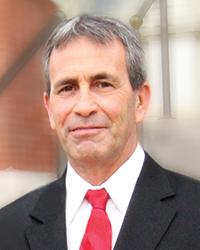
The City of Warwick is the perfect choice - by Frank Picozzi
The late summer sky was bright and the mood festive at the family-friendly “Best in Town” event at Rhode Island’s first Floor & Décor store. Those looking to make some home improvements strolled through the warehouse, admiring the well-stocked aisles, fair

Warwick offers convenience of city living, but feels like a smaller, close-knit community - by Frank Picozzi
Located in the heart of southern New England, Warwick is a perfect community in which to locate your business, or find a spot to develop commercial and residential projects. Warwick brings the convergence of air, rail, highway, and maritime travel in one convenient, central location. We’re home to Rhode Island T.F. Green

Diverse mix of businesses makes Warwick the perfect community - by Frank Picozzi
For those looking for some recreation in the great outdoors, wooded trails and biking paths with spectacular water views, lush green grass perfect for a picnic, fun playgrounds with all the amenities, and modern sports fields can be found easily throughout Warwick. But what does one do when the

Nine Post Rd. receives approval for six units and commercial space - by Frank Picozzi
After several years of planning, the owners of a property in historic Pawtuxet Village recently received planning board master plan approval for a mixed-use building consisting of six residential units and 1,510 s/f of commercial space along the banks of the majestic Pawtuxet River.

.png)

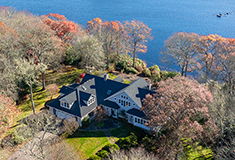
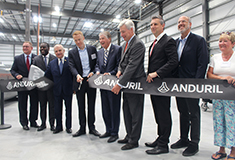
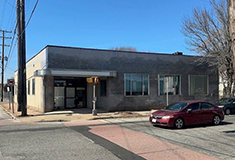
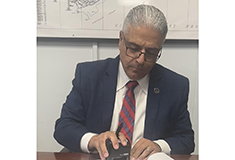
.png)


.png)
